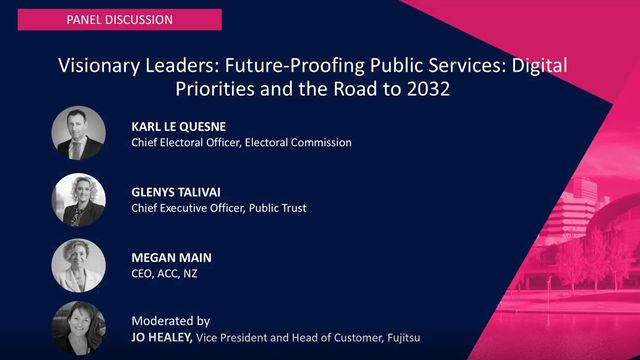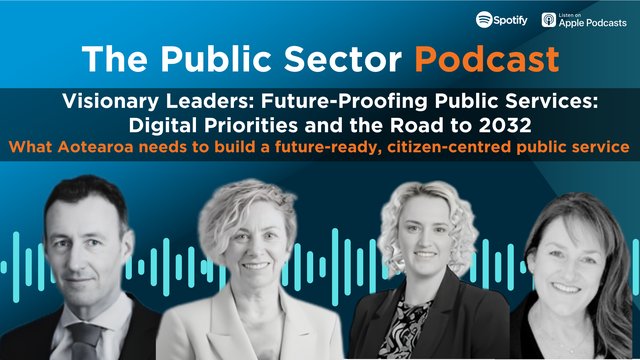Process improvements for a more efficient and effective public service
Case Study: Creating Your Strategy and Understanding What Your User Really Wants and Needs

Justin Readman
General Manager, Development Services
City of Kitchener
Improving the process for new developments
All large organizations, and public sector institutions in particular, generally have complicated, bureaucratic processes, developed over time. Some of these require a lot of repetitive employee input, whilst others were simply developed in a different age – before the digital age – and would benefit from an upgrade. These upgrades can take many forms, from Robotic Process Automation (RPA), to just a simple improvement or advancement in processes.

This is a lot of new construction, and thus the City decided to conduct a “development services review,” designed to look at “how development functions interact and are coordinated, and to identify if that coordination can be improved in a way that results in clear accountability and stronger collaboration.” Ultimately the purpose is to develop an “even better customer experience (CX).”
The review had five goals:
- To establish a shared vision for economic growth, city-building sustainability, and development interests – “to ensure that staff is working towards common goals.”
- To align work processes to support the development services vision.
- To enhance team-building collaboration and creative problem-solving.
- To take a coordinated approach to development – “a holistic vision for neighborhoods.”
- To communicate clearly and effectively.
The review engaged “250 internal and external stakeholders, using a variety of methods including online engagement platforms, one-on-one interviews, surveys, focus groups, workshops, and drop-in sessions.” Before the review even began, many of the stakeholders were asked questions about their expectations for such a review and what success would look like. The Council leadership team then developed the scope for the review, which would focus on two areas: “site plans and approvals; and the public engagement process.” Those engaged in the review were also divided into two groups: “public participants, who live and work in the city; and the development community, including consultants and builders.” Some of the engagement with the developers was conducted anonymously so as not to betray some of their commercial-in-confidence proposals.
In late 2018 the review began. It was important to get the steps right leading up to the review, because “many of the groups involved often have competing interests in terms of development.” The biggest stumbling block initially was that Council staff didn’t quite know how to relate to customers. “So we held a series of empathy mapping exercises to assist staff in better understanding the customer experience. It really paid off as staff developed a new appreciation for what it’s like to walk in your customers’ shoes.”
The results of the review process
Following the engagement with the community, the City developed a new vision statement:
“A city for everyone, with our mission of working together, growing thoughtfully, and building community. This is underpinned by our values, which are accountability, collaboration, communication, leadership, and respect.” This was all developed in partnership with all the stakeholders, thus there is “an expectation that we all abide by these commitments and work through these processes, specifically on development applications.” With a clear vision, mission and set of values and processes, the actual review took place. Across two workshops, “we got about 500 process improvement ideas,” all of which were then categorized and prioritized, “with like ideas grouped together.” Staff then focused on “quick wins, which were easy to implement with a big payoff, as well as items which were harder to implement but would also have big payoffs.”
For example, one of the new projects was the creation of a “general volunteers group to test ideas with demographically represented members of our community, to get their ongoing input before we make decisions that impact them.” It was clear that there was a need for knowledge as well, so a “one and a half hour, planning 101 workshops was launched virtually in December 2020 with 30 participants.” Planning is now underway for the next workshop, “a deeper dive into complex planning processes.”
Another improvement project is around “closing the engagement loop.” Previously this was done only at Council meetings. Now it can be done “at various points in time over the course of the development application.” This simple change removes the “lack of transparency within the community.”
A further simple improvement was the launch of a survey after each “in-person or virtual engagement method.” The survey collects data that is “foundational to the creation of equitably informed engagement opportunities.”
Other developments from the improvement process include changes to how notices are sent out and who gets them. “The Planning Act only requires notices to be sent to owners, but we now send to renters or other occupants of dwellings as well because they also have a stake in how their community is developing. This has resulted in a five times increase in the number of people being notified.” Even the way notices now look has changed, with more than just text. “This really allows people to visually see what changes are happening in their community and to gauge whether they want to participate and have a say in what the development looks like.” If they are interested, they want “easier access to information, so our website is currently being revamped.” The new site will have a map interface and an ability for “citizens to drill down into more detailed information.”
The main theme of the review process was the need to have “customer-centered processes.” As such, “a one-year pilot project to create one point of contact to the site plan process” has recently been established. Previously, three project managers engaged with a development process application. Now only one person will be engaged for the duration of the process, and the applications will be sorted into basic and complex applications, allowing the appropriate competencies to be attached to each type. Related to this but separately, “the City is also moving towards digital transformation solutions for application submissions.” Luckily all of this was in place just before the pandemic hit because it set the City up for remote and virtual work, “allowing residential approvals to continue without needing to have face-to-face interactions.” The new software was also installed, and altogether, this has “saved a considerable amount of time – reviews now happen at least 50% quicker,” especially because it removes the need to print and review applications by hand.



































